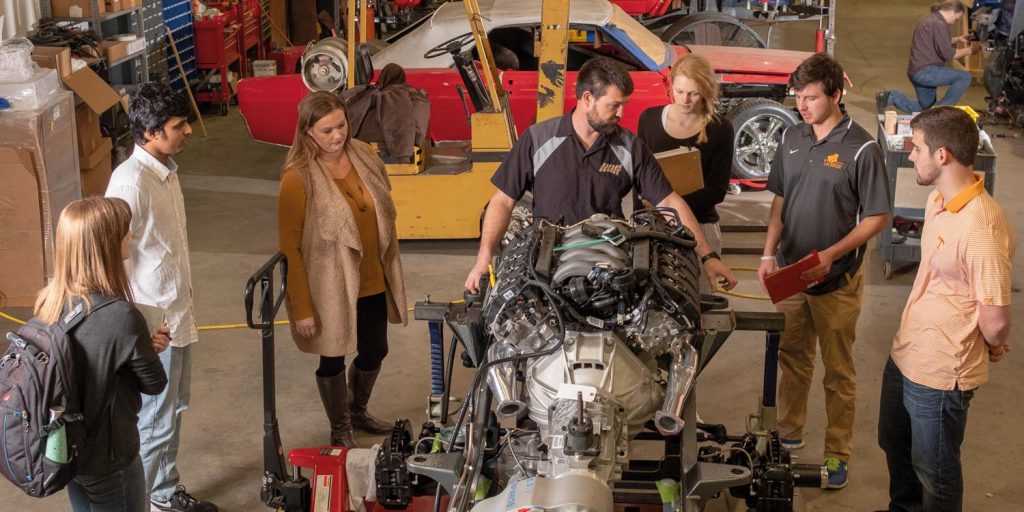Like many businesses, Krawlers Edge started as a hobby.
Thomas Kincer had an affinity for taking older model Ford Broncos and preparing them for use as rock crawlers, the recreational activity of driving up and over seemingly impassable terrain.
As his expertise in restoring Broncos grew to include custom builds, Kincer and his sister Sabrina Kincer Stallings refocused the business—named with a “k” to honor their last name—as a full-time endeavor.
Their focus is on “first generation” Broncos, those built between 1966 and 1977 and considered a classic by enthusiasts. Refurbished models from that era can sell for well more than $100,000, placing Krawlers Edge in a niche market.
As their business picked up, the duo sought out advice on how to more efficiently manage their inventory.
“We grew up with a dad who was always involved in business, very entrepreneurial,” said Kincer Stallings. “When we really got going, we turned to the Small Business Association and they pointed us to UT.”
A connection was made with the Department of Industrial and Systems Engineering (ISE) and Assistant Professor of Practice Floyd Ostrowski, who assembled a student team of seniors and sophomores to the project.
Lean manufacturing—the process of streamlining production and stripping inefficiencies without sacrificing quality or output—has long been a departmental specialty, and is a critical focal point of the students’ project.
“We went in and examined a lot of what they did, from taking inventory to where they placed their supplies,” said team member Abbi Harr. “It’s lean manufacturing to the extreme.”
Prior to the students’ involvement, Krawlers Edge had no formal system of monitoring their parts or stock, sometimes only knowing to order more parts if they ran out.
“We designed a whole new supply chain for them,” said Joe Pettey, another team member. “We’re now helping them work on scheduling deliveries and thinking of things from an efficiency standpoint.”
Thomas explains the manufacturing process to the ISE student team (L-R): Carly Johnson, Rahul Ravikumar, Sabrina Kincer Stallings, Thomas Kincer, Abigail Harr, Joseph Pettey, and Jake Fountaine
The students reorganized stations on the floor so parts storage is now adjacent to assembly, and a new highly visible interactive board now tracks inventory so employees know to place refill orders prior to the depletion of stock.
These changes have been particularly helpful since the company recently opened a satellite warehouse for parts storage and early frame development.
“They’ve really made a big impact on how we do things,” said Kincer. “We’ve been able to save a lot of time in our workflow—time that we can use to do what we do best: build.”
In addition to fully rebuilding Broncos, Krawlers Edge has also seen a sharp increase in demand for both the standard and highly customized chassis they create, providing yet another opportunity for the ISE students to apply their supply chain knowledge.
A known issue with classic Broncos is frame corrosion. By using materials that weren’t available 50 years ago, Kincer is able to provide his customers a far more reliable option for restoration or retrofitting.
Frame production has already increased from one a month to three, with an eventual goal of scaling up to 15 a month, making the help UT’s students provide even more vital.
“We have the coolest projects with the best kids,” said Ostrowski. “People want to hire graduates with experience, and, along with our college’s co-op and internship program this is a way for them to do that.”
Ostrowski designed the course to introduce students to the project during their sophomore year.
That way, even when the project’s current seniors graduate in May, future student groups have valuable insight that may continue to help Krawlers Edge run as efficiently as possible and help implement new innovations as they arise over the coming years.
